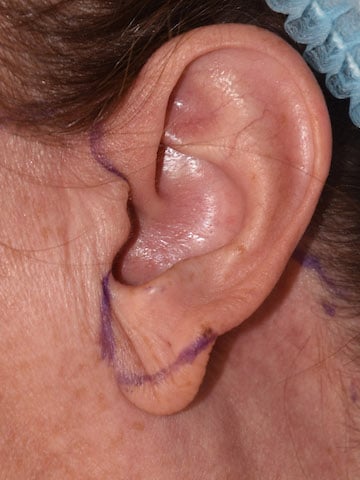Is ear reshaping surgery safe? This is a common question among people who are unhappy with the shape, size, or position of their ears. Ear reshaping surgery, also known as otoplasty, is designed to improve ear appearance, enhance facial harmony, and restore confidence. Like any surgical procedure, safety is a major concern for those considering it. Fortunately, with modern techniques and proper care, ear reshaping surgery has a high safety profile and delivers long-lasting results. Understanding how it works, who it’s suitable for, and the associated precautions can help you make an informed decision.
What is the treatment and how it works?
Ear Reshaping Surgery In Dubai(جراحة إعادة تشكيل الأذن في دبي) involves surgical techniques to alter the size, shape, or projection of the ears. The procedure can be performed on both adults and children once the ears have reached their full development. The process typically includes:
- Reshaping ear cartilage to achieve a more balanced look
- Pinning ears closer to the head to reduce protrusion
- Correcting congenital deformities or damage caused by injury
During the surgery, incisions are usually made behind the ear to minimize visible scarring. The cartilage is then sculpted and secured with sutures to maintain the new shape. The surgery is generally performed under local or general anesthesia, depending on the patient’s age and preferences.
Importance of treatment:
The importance of ear reshaping surgery goes beyond aesthetics. For many, ears that are too large, asymmetrical, or protruding can cause self-consciousness, especially in social situations. Children may face teasing at school, and adults may avoid certain hairstyles to hide their ears. Key benefits of the treatment include:
- Improved facial balance and symmetry
- Boosted self-esteem and confidence
- Correction of birth defects or trauma-related issues
- Long-lasting enhancement to appearance
This procedure can have a positive psychological impact, allowing individuals to feel more comfortable in their own skin.
Types of treatment:
There are several types of ear reshaping procedures, depending on the desired outcome:
- Otoplasty for protruding ears – Involves setting the ears closer to the head
- Ear reduction surgery – Removes excess cartilage and skin for overly large ears
- Ear augmentation – Adds structure to underdeveloped ears using implants or cartilage grafts
- Reconstructive ear surgery – Restores shape after trauma or congenital deformities
Each type is tailored to meet specific needs, and the choice depends on the patient’s condition and goals.
Preparation and aftercare:
Proper preparation and aftercare are essential to ensure ear reshaping surgery safety and optimal healing.
Preparation tips:
- Share your medical history and any current medications with your surgeon
- Stop smoking several weeks before the procedure to aid healing
- Avoid blood-thinning medications unless advised otherwise
Aftercare steps:
- Keep the surgical area clean and dry
- Wear a protective headband at night to support ear positioning
- Avoid strenuous activities until cleared by your surgeon
- Follow all post-operative instructions for dressing changes and follow-up visits
Following these guidelines minimizes complications and speeds up recovery.
Ideal candidate:
The ideal candidate for ear reshaping surgery is someone who:
- Is in good overall health
- Has fully developed ears (usually age 5–6 or older)
- Feels self-conscious about ear shape, size, or projection
- Has realistic expectations about results
- Is free from untreated chronic ear infections or healing disorders
Both adults and children can undergo the procedure if they meet these requirements.
How to choose the right clinic?
Choosing the right facility is a key factor in ensuring ear reshaping surgery safety. Consider these points:
- Surgeon’s qualifications and specialization in otoplasty
- Before-and-after patient photos
- Patient testimonials and reviews
- Clinic hygiene standards and accreditation
- Clear communication and detailed consultation process
Risks:
While ear reshaping surgery is considered safe, it carries potential risks, as with any surgical procedure:
- Temporary swelling or bruising
- Minor discomfort or itching during healing
- Infection or delayed wound healing
- Overcorrection or undercorrection
- Visible scarring (usually minimal and hidden)
These risks can be significantly reduced by following your surgeon’s instructions closely.
Benefits:
The benefits of Ear Reshaping Surgery(جراحة إعادة تشكيل الأذن) often outweigh the minimal risks:
- Permanent improvement in ear appearance
- Enhanced facial harmony
- Boosted confidence in personal and professional settings
- Minimal downtime compared to other cosmetic surgeries
- Subtle, natural-looking results
FAQs:
Is ear reshaping surgery painful?
Mild discomfort is common during the first few days, but it can be managed with prescribed pain relief.
How long does recovery take?
Most patients can return to normal activities within 1–2 weeks, with full healing in a few months.
Will the results be permanent?
Yes, the changes are typically permanent once healing is complete.
Can children undergo the surgery?
Yes, as long as their ears have fully developed, usually by age 5–6.
Are there non-surgical options?
For newborns, ear molding may be possible, but for older individuals, surgery is the most effective method.
Conclusion:
So, is ear reshaping surgery safe? In most cases, yes—when performed by an experienced surgeon in a professional setting, it has a high safety record and long-lasting results. By addressing both functional and aesthetic concerns, the procedure can significantly improve self-image and quality of life. Proper preparation, realistic expectations, and careful aftercare are key to ensuring the best possible outcome. Whether you want to correct protruding ears, adjust their size, or restore balance to your face, ear reshaping surgery can be a safe and effective solution.

